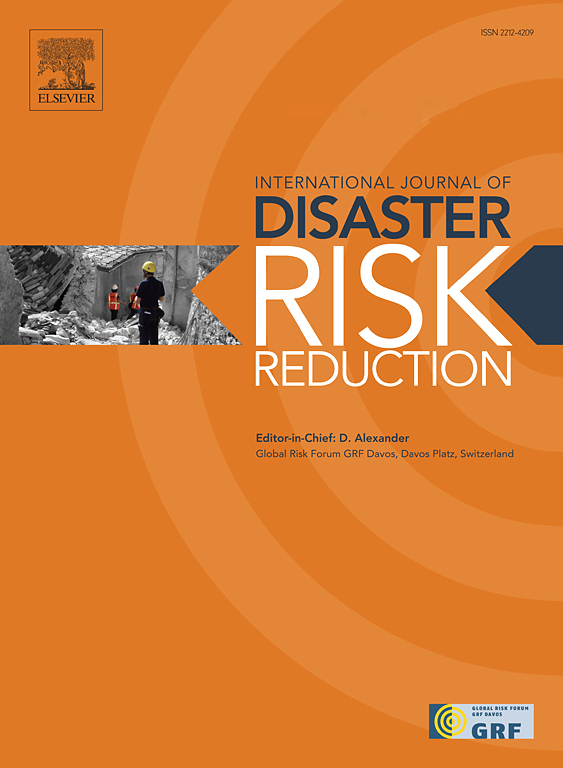A multi-factor flood resilience index for guiding disaster mitigation in densely populated region
IF 4.2
1区 地球科学
Q1 GEOSCIENCES, MULTIDISCIPLINARY
International journal of disaster risk reduction
Pub Date : 2025-03-10
DOI:10.1016/j.ijdrr.2025.105387
引用次数: 0
Abstract
The formulation of effective flood control strategies to enhance climate resilience necessitates the quantification of factors related to mitigation and adaptation. This study introduces a flood resilience index (FRI) that incorporates not only the physical risks of flooding but also socioeconomic conditions and time-varying factors. A variety of rainfall scenarios were considered in assessing the various elements of the FRI curve, including the hazard, nadir, and the rate at which resilience changes. The findings indicate that FRI impacts are directly influenced by rainfall intensity, while the slope of the falling limb is affected by rainfall patterns. The curve shape is defined by the perspective of the nadir. Furthermore, the evolution curves of the FRI and the hazard exhibit a phase difference due to the interaction among hazard, exposure, and sensitivity factors. These results provide crucial insights into the optimal timing of disaster relief and mitigation strategies. Under high-hazard conditions, disaster mitigation measures within adaptation pathways must focus on reducing the impact of physical flooding, while considering socioeconomic factors that significantly influence the rising limb of the FRI curve to mitigate disaster risks. In mild and moderate hazard scenarios, relief efforts should be guided by an understanding of the dominant hazard-related factors (e.g., flood depth and area) and socioeconomic stability. The proposed dynamic risk map has the potential to facilitate more effective disaster risk management and enhance overall resilience.
求助全文
约1分钟内获得全文
求助全文
来源期刊

International journal of disaster risk reduction
GEOSCIENCES, MULTIDISCIPLINARYMETEOROLOGY-METEOROLOGY & ATMOSPHERIC SCIENCES
CiteScore
8.70
自引率
18.00%
发文量
688
审稿时长
79 days
期刊介绍:
The International Journal of Disaster Risk Reduction (IJDRR) is the journal for researchers, policymakers and practitioners across diverse disciplines: earth sciences and their implications; environmental sciences; engineering; urban studies; geography; and the social sciences. IJDRR publishes fundamental and applied research, critical reviews, policy papers and case studies with a particular focus on multi-disciplinary research that aims to reduce the impact of natural, technological, social and intentional disasters. IJDRR stimulates exchange of ideas and knowledge transfer on disaster research, mitigation, adaptation, prevention and risk reduction at all geographical scales: local, national and international.
Key topics:-
-multifaceted disaster and cascading disasters
-the development of disaster risk reduction strategies and techniques
-discussion and development of effective warning and educational systems for risk management at all levels
-disasters associated with climate change
-vulnerability analysis and vulnerability trends
-emerging risks
-resilience against disasters.
The journal particularly encourages papers that approach risk from a multi-disciplinary perspective.
 求助内容:
求助内容: 应助结果提醒方式:
应助结果提醒方式:


